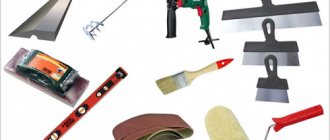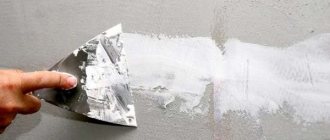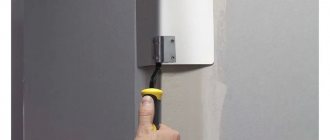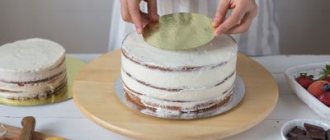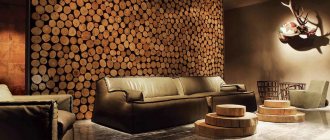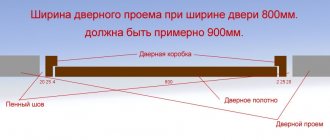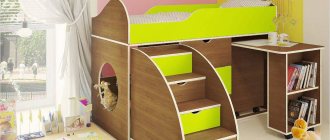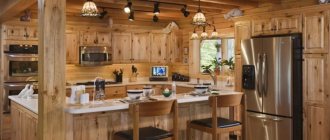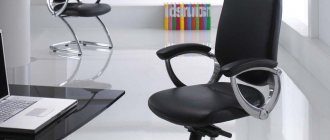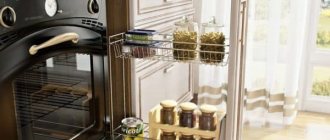Over time, the wooden surface becomes covered with defects, cracks appear, which, as their number increases, spoil the decorative qualities of the material and also affect its durability. For this reason, it is necessary to additionally strengthen the material; wood putty is used. The rules for its selection, application features and properties will be discussed further.
Types of wood putties
There are different types of decorative putty, and you need to clearly determine whether you need putty to preserve the wood pattern when the top of the wooden product will be varnished, or if you are going to tint it with paint. The first types of products are almost invisible on the surface and copy the shade of wood. The second ones are often made in white.
There are these types of putties:
- Oil based. Thanks to the presence of drying oil, such materials protect the surface from moisture. And its high resistance to changing weather conditions makes this putty an excellent choice for application to wooden windows, for treating house facades and other objects located on the street.
- Acrylic. Polymer compositions with acrylic are environmentally friendly, they can withstand heavy loads and get along well with a humid environment (they do not allow moisture to penetrate deep into the wood).
- Water based. They do not contain harmful chemicals and do not conduct liquids. This putty can protect wood from fire, but it takes a long time to dry.
If you are interested in the natural color of wood, then oil-based or water-based samples will be the most suitable.
What types of putty can be used
Putty is available in the form of a dry or liquid mixture. It is chosen taking into account its composition, color, purpose (basic or finishing). The following types of putty are suitable for working with wood.
Acrylic
The purpose is universal. Suitable for laminate, chipboard and other finishing materials. Used for exterior and interior decoration. Characterized by:
- Elasticity;
- No shrinkage;
- Increased strength;
- UV resistant;
- Ease of tinting;
- Fire resistance;
- Excellent thermal insulation properties;
- No smell.
Epoxy
Material providing maximum joint density. It is applied for
- sealing cracks and joints when repairing floors;
- eliminating scratches, potholes, cracks and other defects before painting.
It has a significant drawback: it is incompatible with stain .
Plaster
Water-soluble type of putty. Doesn't fit well on wood. Requires priming of the surface before filling. After drying, a heterogeneous structure is formed, prone to cracking and crumbling. Suitable as a topcoat over a base layer of polymer mixture.
Polymer
Made from latex. Doesn't bubble. Withstands temperature changes. Available in a wide range of colors.
Oil-adhesive
Cheap plastic material with an unlimited shelf life. The main binding component is drying oil. Fillers:
- glue;
- lime or chalk.
Intended for treating residential and office premises, facades, bathrooms and toilets.
Criteria for choosing putty for painting
Depending on the conditions where the wooden object will be used, the most suitable type of covering material should be selected. When carrying out repair work outdoors, an important parameter for choosing a putty composition is resistance to heating, cooling and high humidity.
Therefore, for treating the walls of wooden houses, fences and other attributes of architecture, oil putty will be the best choice. It can be used after wood components have been treated with insect and rot repellent compounds, but before final painting.
Acrylic compounds are the most versatile; they are suitable for wooden products indoors and outdoors, as they have a high level of strength and wear resistance. It should be noted that such putties are white in color, therefore they are intended specifically for applying paint on top, not varnish.
For parquet floors, furniture and other objects that people come into contact with, you need to choose safe materials, so you can use harmless aqueous compounds. Their characteristics are in many ways similar to acrylic putty mixtures, but their price is cheaper.
Leading manufacturers: tested by time and users
The modern market offers a wide range of good domestic and imported mixtures produced by famous and reliable brands.
Wood putties from Tikkuril are in demand. This is a Finnish company that offers its products at high prices, which are fully justified by the quality.
Tikkurula has been on top for a long time
Famous for its quality products. Their products are inexpensive, but the quality does not suffer from this.
Lakra has decent products
Domestic wood putty is cheaper than many compounds from competitors, but the quality of the supplied products is quite high.
Eurotex is also considered worthy of mention.
Required Tools
The process of decorating wooden products has several stages: first, the surface must be properly prepared, then it can be puttied and painted. But depending on the type of materials that will be painted, the technology is somewhat different. The general list of necessary tools for painting includes:
- paint of the desired color and composition;
- brushes;
- putty and primer;
- putty knife;
- “skin” (sandpaper);
- construction hair dryer or cleaning agent.
We will need a hair dryer or a cleaning agent to remove the old paint layer from the product.
You should be very careful, because the temperature of heating the surface with a hairdryer is quite high, which can negatively affect your wooden object. Therefore, if you are going to repair an antique item, it is better to use chemical cleaners.
Creation of models and furniture
The art of sculpting, finishing and creating furniture from wood requires special putties. The characteristics of such wood putties are different.
The main criterion here is the post-processing method.
- Classic one-component putties are excellent for filling small cavities or cracks.
- One-component putty, which is relatively soft, is definitely better suited for hand processing, while harder ones, usually two-component, are easily processed by machine.
- It is important to know how thick a layer of putty can be applied at one time. Some solutions can dry evenly even a few millimeters thick; for others, a millimeter is the upper limit.
- Sometimes putty mixed with dust or sawdust is used. They are available in the form of a liquid base, but when working with the material, dust and sawdust are formed; for example, you can wipe off the wood from the invisible side of the object with thin paper.
Such putties are perfectly matched in color and allow you to achieve an aesthetic effect at the cost of a lot of work.
Recommendations for applying a leveling layer
Puttying allows you to solve a number of problems:
- seals artificial holes in wood, such as nail holes;
- fills the natural pores of the wooden surface for leveling (if there are porous types of wood, such as oak) and protection from damage;
- forms a homogeneous layer on which paint can easily spread.
To ensure that the treated area turns out “according to the rules”, use several recommendations:
- If you work with putty outside, choose a day when the air temperature is above +5. Otherwise, the composition will thicken and will not fill the cracks well.
- If there are voids on the surface, they must first be filled with putty, after which they are sanded, the “sand” that appears is removed and the wood is fully processed with putty, and after it dries, you can paint it.
- The best material for a spatula is stainless steel.
- Deep holes (more than a centimeter) in the wood are filled with putty in several layers, allowing each layer to dry. Application thickness – 2-3 mm.
Preparation of plywood
A plywood sheet can hardly be called a full-fledged tree, since this material is obtained from veneer, but it is often used in the construction industry. Using plywood, you can make a variety of interior items and also use it for finishing walls, creating partitions, etc. Due to its smooth surface, plywood is easy to paint, but you must first putty.
There are plywood sheets of different sizes on sale, and it’s not difficult to cut, but to cover a large area, as a rule, you can’t get by with just one sheet—several pieces are installed, right next to each other. As a result of this action, joints are formed that must be sealed, otherwise cracks may appear in the paint.
To hide the seams, they are covered with putty: the compound is applied across the joint, creating a dense layer. It is more convenient to work with a 10-centimeter spatula, periodically moistening it with water, because acrylic compounds dry quickly and lumps may form. After puttying, the surface must be leveled with a grinding machine. When the layer dries, repeat the action, but covering the entire surface, and not just the seams.
Preparing the tree
Wooden products often retain unevenness on the surface from knots, and also have places where resin can appear - these points must be eliminated before applying a leveling compound. Knots should be cut with a chisel (about 3-5 mm deep), creating small depressions, which are then filled with putty. But before that, wooden objects that have not previously been varnished must be oiled - for this they use heated drying oil.
When working with a product that has traces of paint, varnish or other substances on it, the top layer must be completely cleaned. To do this, wipe the surface with a cleaner and wait until the soaked paint can be easily removed with a spatula.
Wash with plain water or vinegar to neutralize the alkaline environment. After that, use sandpaper to lift the wood fibers. To improve the adhesion of the putty to a wooden surface, you can apply a primer, choosing one with the same composition as the putty, for example, acrylic.
How to use putty materials
Let's consider the main areas of application of this material. This is the elimination of defects on a wooden floor, sealing various kinds of cracks, imitation of wood texture on the surface.
Putty for wooden floors
Putty for wooden floors must contain components that will prevent the material from quickly wearing out from mechanical stress.
If you try to save money, then after 2-3 years the sealed surface will deteriorate and crack
Aqueous, paste-like and gel-like compositions are suitable for the floor. If the product contains fiber fiber, then the durability of the finished coating is guaranteed.
Nitro-based putty will also be stable. In the composition you need to look for cellulose ether components, acetone, resins. Products containing wood flour have a high level of adhesion to any type of wood. Nitro putties, for all their positive qualities, have a rather pungent odor.
Homemade compounds mixed with wood flour ideally fill cracks and seams on wooden floors
Wood putty: what to use to fill cracks
A small gap in a wooden floor is sealed either with a putty of a suitable color, or with a composition of any shade, followed by priming and painting the floor.
Cracks 3-4 mm in size are sealed with acrylic products; larger defects should not be touched, as the finished material will crumble and fall out.
The solvent-based product is well suited for sealing cracks up to 1 cm, and can even eliminate defects on heated floors.
Oil compositions for eliminating narrow cracks should be mixed with chalk, and for wide flaws - with wood dust.
Imitation of wood from putty as a way to decorate the surface
To make imitation wood, a number of tools are required. You need to get a palette knife, a textured roller, a roller with a picture of a wood cut, several types of rubber spatula, and a stencil.
Acrylic, gypsum and silicone bases are suitable for interior finishing.
Beautiful imitation wood made of putty
Final putty before painting
The process of treating wooden surfaces with putty comes down to several steps:
- dilute the mixture until creamy, whipping with a drill with an attachment;
- You shouldn’t mix a lot of putty at once, because... it can dry quickly;
- start treating pits and cracks, creating a layer of 2 mm;
- When you have laid the first layer and waited for it to dry, level it with sandpaper;
- repeat the application of putty, reducing the thickness of the mixture to 1.5 mm;
- cover the surface with soil.
Now your wooden product is completely ready for painting, for which it is better to take paint compositions with the same components that are present in the putty: acrylic paint, water-dispersed paint, oil paint, etc.
When working with putty on wood or other material, remember that indoor air humidity cannot be higher than 50, and outdoors cannot exceed 75%. The ideal temperature in the room for quick drying of the putty is 20-25 degrees.
Types of putty compounds for working with wood
As already mentioned, there are quite a large number of funds.
Before purchasing putty, you should familiarize yourself with its different types and brands, and also take into account a number of other criteria. For example, the composition should mask the original texture of the wood, or, conversely, emphasize it. Will the wood be varnished over the putty or are you planning to use tinting mixtures?
So, there are the following types of putty mixtures:
- Oily. Wood products are made moisture resistant due to the drying oil contained in the composition. Moreover, they cope well with temperature changes, which makes it possible to use them when working with façade wood.
- Acrylic based. They are environmentally friendly. Among the main components there are also polymers. The products are odorless and do not pose a threat to human health. They provide a high level of strength and are not susceptible to moisture. Suitable for indoor work.
- Made from water. There are no chemicals or other aggressive components in the composition. The downside is that the product takes quite a long time to dry. They need to be applied in several layers for additional strength. But the compositions are heat-resistant and protect against fire, and this is undoubtedly an advantage.
Oil- and water-based products are suitable in cases where you plan to leave the wood texture visible.
Putty before wallpapering
Final putty before wallpapering
In order to hang wallpaper with high quality and to make it last longer, it is advisable to do it on the most flat surface possible.
Some people prefer to use drywall as a base for wallpaper.
However, this is a rather expensive choice.
And there will be a lot of hassle with laying drywall.
What does it cost just to buy screws, hangers, profiles, and even the plasterboard sheets themselves.
A simpler and more cost-effective way to level walls is putty. It is especially practical on wooden surfaces.
But how to putty wood under wallpaper? How to choose the right mixture for such purposes?
Wallpaper putty has its own characteristics. To ensure quality work, first of all the walls are sheathed with plywood. Then you need to apply the base plaster.
After this, you can apply one or two layers of finishing plaster, which will provide a smooth surface. To obtain an ideal result, after drying the surface should be treated with sandpaper.
Even plywood that is resistant to high humidity needs putty. This is necessary for several reasons:
- To prevent the occurrence of fungi, mold and similar parasites on the surface of the walls.
- So that the surface is smooth enough for high-quality wallpaper gluing.
To cover wooden surfaces, both dry and ready-made putty mixtures are used. The dry composition is sold in bags of twenty-five kilograms each.
It is a powder that must be diluted to the required consistency before use. After this you can start applying.
You need to cope with the task within twenty thirty minutes, since the solution dries quickly, after which it can no longer be used. The liquid mixture is sold ready-made.
The solution is in a bucket (or jar), after opening which you can immediately start working. This option is much more practical and faster.
Acrylic putty is quite suitable for covering wooden surfaces under wallpaper. Its main advantages in this area: ease of application, environmental friendliness, ease of finishing with sandpaper.
In order to putty walls under wallpaper, there is no need to bring the surface to perfect condition. Therefore, there is no strict rule about what type of solution to use.
It would be most practical to give preference to universal mixtures that will fulfill their role perfectly and will not require large expenses. All small defects left after putty will be successfully hidden under a layer of wallpaper.
